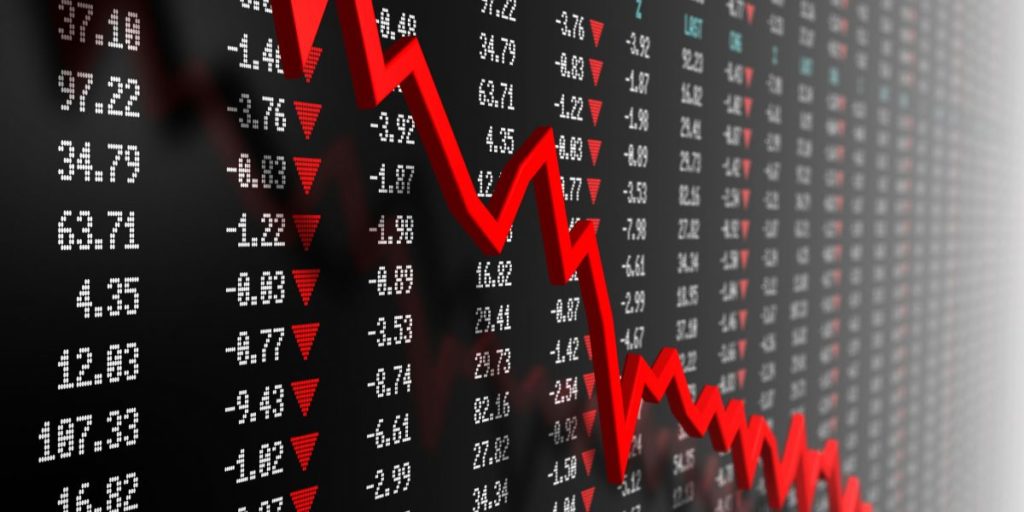Remember the Dow’s 1,000 point plunge?

Do you remember where you were the morning of August 24, 2015 — when the Dow dropped nearly 1,100 points shortly after the opening bell? I was at JFK getting ready for my annual late summer trip to see the in-laws in Nashville. I was relieved to not be in the office … but also bummed that I was missing out on a huge breaking story. (And stressed out by having to travel with two young kids!)
The stunning plunge reminded many of the Flash Crash in 2010, the Dow’s nearly 800-point fall in September 2008 after the House rejected the bank bailout TARP bill … and, of course, the infamous Black Monday Wall Street wipeout in 1987.It was a panic, pure and simple. There were legitimate worries about the health of the global economy and stability of the world’s financial markets. Keep in mind that the Dow fell 531 points on the Friday before this particularly Manic Monday.
Now let’s “flash” forward a year. The chaos of August 2015 seems like a distant memory — even though many of the factors that led to stocks taking a Nestea plunge last year are still concerns today. A slowdown in China’s economy. Oil prices. What the Federal Reserve will do next.
But the Dow is up 20% from the lowest point it hit last August 24 — a gain of more than 3,000 points. The S&P 500 and Nasdaq have enjoyed similar rallies.
Sure, it’s hasn’t been a straight shot up. The market took a nasty tumble this January and early February before roaring back to life again. And stocks briefly stumbled in the wake of June’s Brexit vote. Still, the market has been mostly quiet. It’s been a slow grind higher.
There haven’t been many gigantic one-day moves — in either direction. And the VIX (VIX), a measure of volatility known as Wall Street’s fear gauge, is extremely low. CNNMoney’s Fear & Greed Index is showing levels of Extreme Greed too.
Jim Tierney, chief investment officer of concentrated US Growth with asset management firm AB, thinks this could continue. He said it’s more likely that individual stocks will crash as opposed to the entire market.
“Overall market volatility has been low but in individual stocks it is very high,” Tierney said, pointing to big reactions some retail stocks have had lately after their earnings. Urban Outfitters (URBN) soared on a strong report while Target (TGT) and Lowe’s (LOW) tanked.
Another example? The bludgeoning in jail operators Corrections Corp (CXW). and GEO Group (GEO) after the Department of Justice said last week it would phase out the use of private prisons. At one point, both stocks lost nearly half their value before recovering.
But that’s how markets are supposed to work. Many investors have forgotten that since they’ve shunned stock picking in favor of exchange-traded funds that track an index of the broader market or a particular sector.
In reality, investors can often make more money by finding individual winners. Of course, that’s a lot riskier than just plopping money in an index ETF.
“It’s more exciting for stock pickers. When you make a bet and it’s right, you are rewarded more,” said Tierney. “Now, there is more of a dispersion in returns. But as always, you have to be right.”
Aaron Clark, portfolio manager at GW&K Investment Management, also isn’t too concerned about another Flash Crash.
He said the market’s recent rebound is justified since earnings should finally start growing again more consistently in 2017. He likes blue chips such as Starbucks (SBUX), biotech Celgene (CELG) and MasterCard (MA).
But Quincy Krosby, market strategist with Prudential Financial, is a little concerned that investors have brushed off Brexit fears so quickly and don’t seem that worried about uninspiring earnings and sales from Corporate America.
She’s not predicting another violent sell-off like the one a year ago. But unexpected bad news could send investors running for the hills again.”There is a more sanguine, and some would say complacent, attitude towards the market,” she said.
Jon Adams, senior investment strategist for BMO Global Asset Management, agreed.”I’m surprised by the rally of the past few weeks,” Adams said. “The market is a bit complacent in Europe now post-Brexit. Populism is gaining momentum. And we need to see more earnings growth as well.”
Another potential problem? Investors are continuing to plow into bonds as well, especially through ETFs.
So another surprise from China — or the Fed — could lead to a big pullback in bond ETFs .. and that could hurt stocks too if investors lose confidence in the broader markets.
Matt Tucker, the head of iShares Americas Fixed Income Strategy at BlackRock, noted that there have been big inflows this year into its investment grade (LQD) and emerging market bond (EMB) ETFs — and even its long-term U.S. bond (TLT) ETF.
“People are stuck trying to find yield,” Tucker said.
And the risk of a mass exit is always higher when investors are all piling into just a small group of ETFs or stocks.

